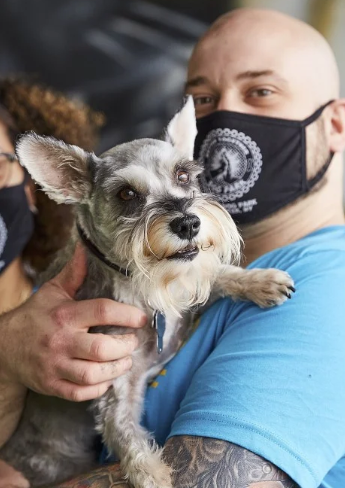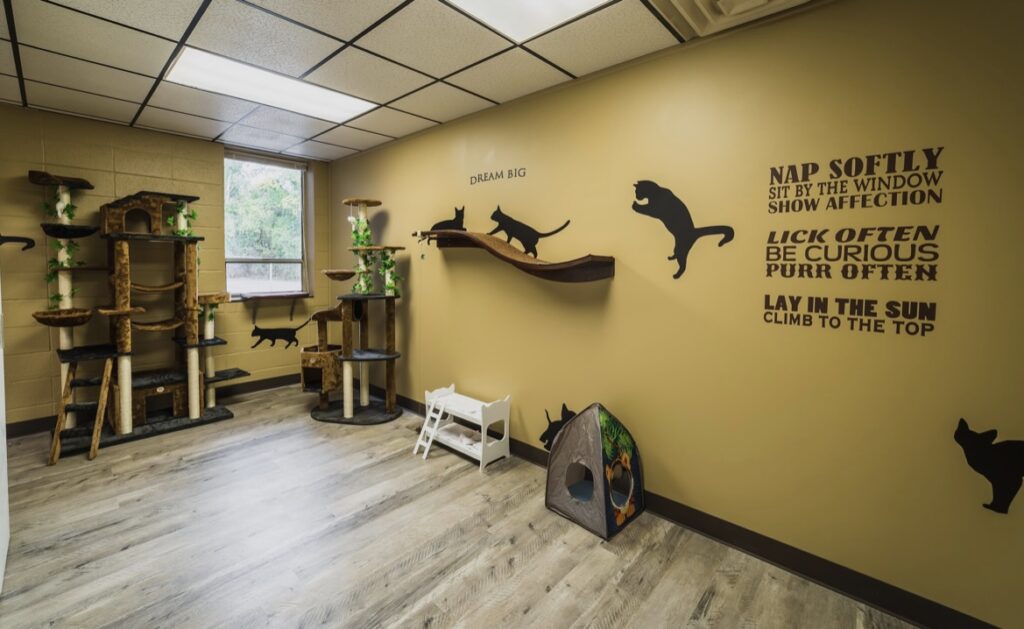
Leaving your pet is one of the hardest things a pet owner can do. As a pet parent the questions are endless, so the first thing to know is you’re not alone. Every pet owner has gone through this exact scenario before, and with the right information, the outcome can be “paw”fect.
Emily Bennett, owner and operator of Paws and Claws Pet Care Inc. in Pittsford, detailed important information that every pet owner needs to know. The first thing Bennett says every pet owner should do is conduct research. Customers should check to see if the facility is within their price range, accepts the breed or size of their dog or cat, or has availability for the days that the animal needs boarding. This information should be easily available through the facility’s website or can be accessed by making a quick phone call.
Pet parents should also schedule a visit to tour the facility and talk with the staff. “If you’re not able to tour a facility, then I wouldn’t put my dog there. It should be full transparency,” says Bennett.
By scheduling a tour, one will be able to see a facility’s daily operations, such as where pets will be spending their day and night. Questions about cancellation policies, pick up and drop off times, and grooming services can be asked during a visit to the facility, too. A tour will give customers the chance to speak with staff about the facility’s daily operations, see the facility’s cleanliness firsthand, and get a feel for the environment a pet will be in for the duration of their stay.
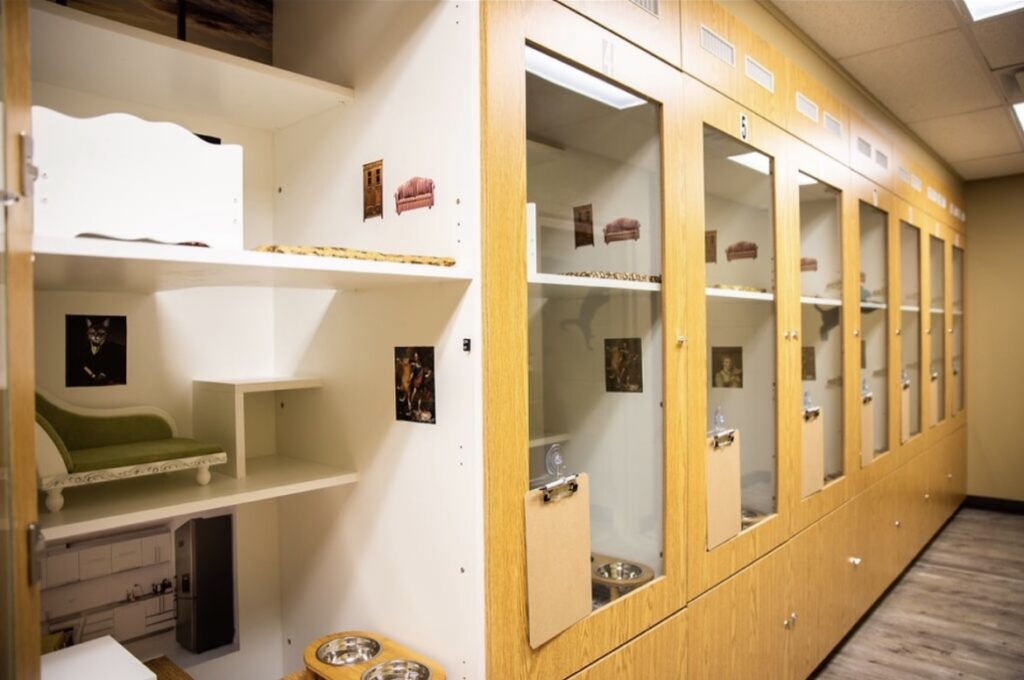
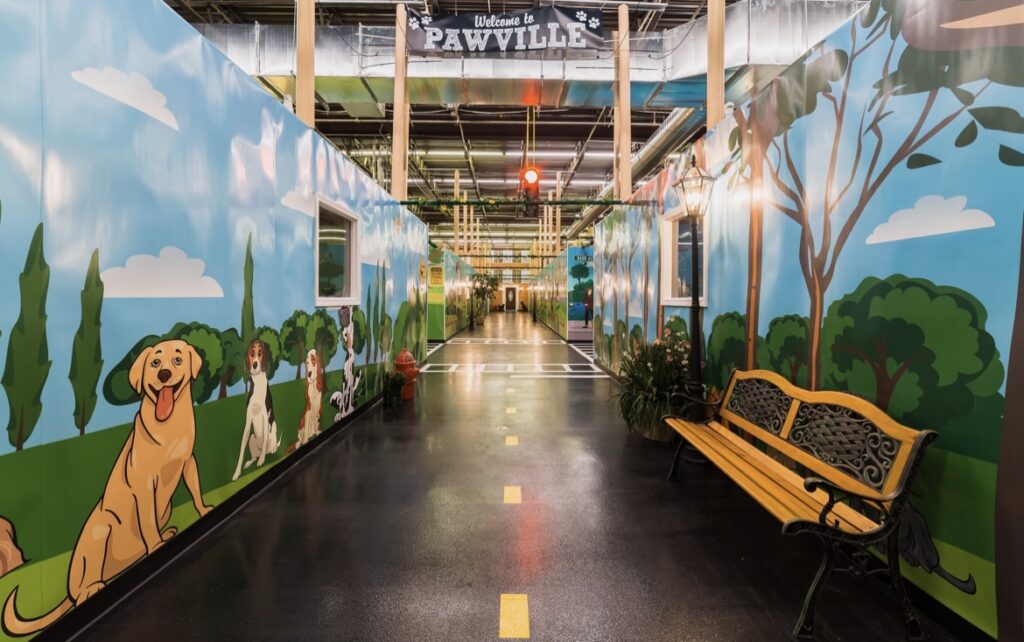
In addition to a comfortable environment, boarding facilities should have emergency plans, including a fire or natural disaster protection plan. It is also recommended to use a boarder that has a veterinary partner for emergency situations, as well as pet CPR and first aid-certified staff.
Another way to jury a boarder is by reading reviews on a third-party website. Bennett explains, “You can’t go off of what the websites say, because everyone will say that they’re the best.” She continues, “There’s not anything more honest than reviews about people’s prior experiences.” Reviews touch on aspects that are more important to the client, like personalization rather than the size of a facility.
Bennett stresses personalization as the most essential factor to help make this decision. She says, “Personalization will set a facility apart from the competitors.” When a boarding facility makes sure that a person’s pet will get attention specifically designed for their unique needs, a customer knows their pet will enjoy its stay and thrive without their owner’s presence. For this reason, boarders need to know a myriad of things to better serve pets, such as the food they eat, what medications they are currently on, and even if they have recently been acting a particular way. For example, boarders need to know if a dog has recently been prone to ear infections. This way they can be prepared and should be open to discussing a plan of action prior to keeping a pet.
The boarding facility also needs to know an animal’s health history. This can include immunization records, doctor visits, and all current and past medications. A pet needs to be up to date on immunizations and might require specific documents from the vet to board. They will also need current emergency contact information and a list of anyone else who is allowed to pick up the pet. The boarder might even have questions about a pet’s daily activities and schedule. Answering questions about this helps the boarder provide essential care and attention based on an animal’s expectations.
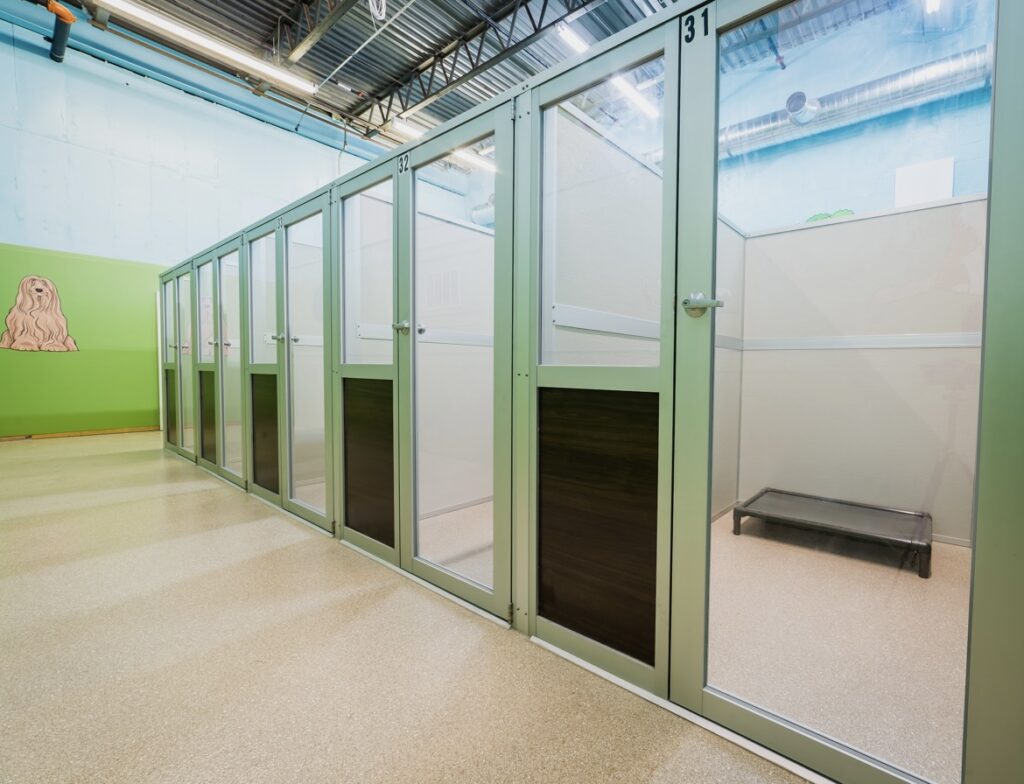
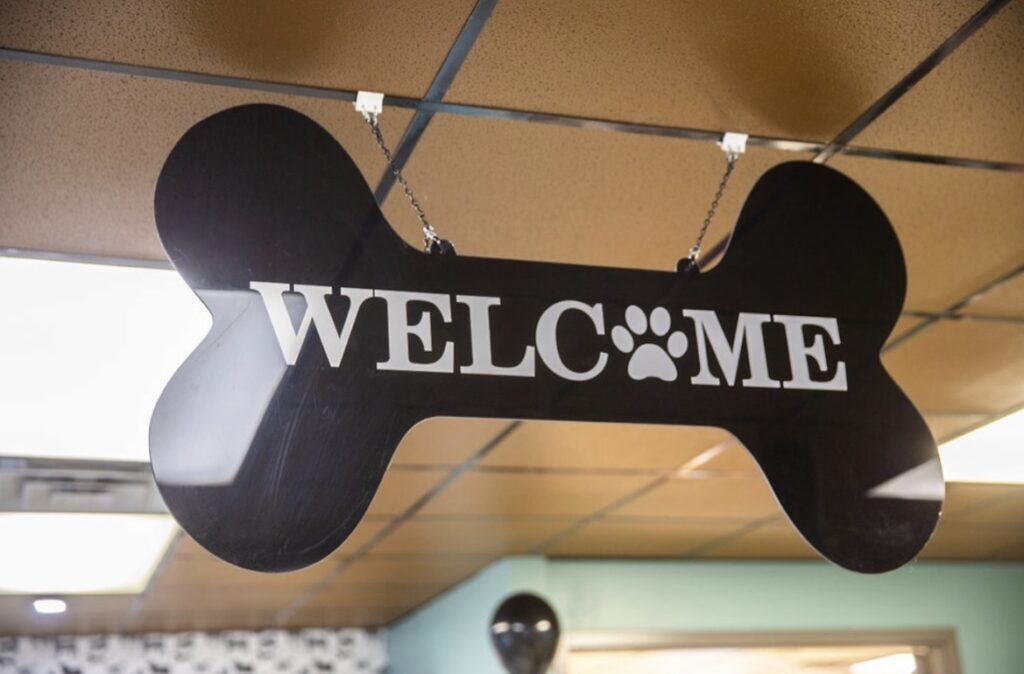
Boarders often warn pet owners not to change up their pet’s routine. Just like for humans, routine is imperative for pets and drastically changing it could have an adverse effect. Something like switching up their food or sleep schedule can cause your pet to act differently while boarded.
To help with this, some boarders will ask that clients supply them with their pet’s food, but not all, so make sure to ask before boarding. Some other things that can help create a smoother transition for a pet is to include a special blanket, toy, or favorite treats. Trying to keep a calm demeanor at drop-off will help as well.
A pet may be a little off once they are brought home after their first boarding. Don’t worry— that’s okay! Give a pet a few days to rebound. They just had an overstimulating trip in a place they aren’t used to without their favorite person. They’ll need extra time to rest just like a human does.
Let’s face it, your dog or cat’s first stay away from home is going to be difficult for you and your pet, so give yourself grace. You’re leaving your best friend. It’s hard, but it’s doable and can even be a fun experience for you and your pet if you properly prepare.
Views: 6






